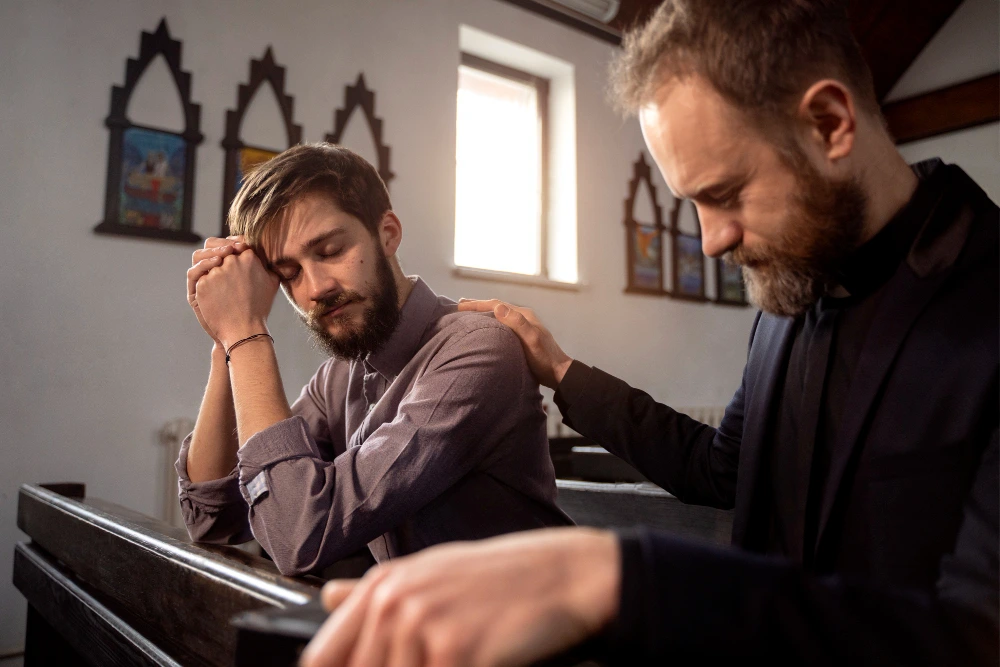Critical Mistakes Every Owner Must Avoid
Every construction project carries a story — and the difference between a triumph and a disaster isn’t chance, it’s preparation. Some builds rise on time, within budget, and stand strong for decades. Others spiral into blown budgets, endless delays, and regretful shortcuts. The Florida Church Roof Estimation project proved a powerful truth: even the best-planned projects face risks, but those risks can be turned into opportunities when you anticipate them early. Each lesson we uncovered is now a blueprint for smarter, safer builds.
Utopian Takeoffs Construction Estimation Services
Utopian Takeoffs turns challenges into smarter building strategies. From keeping budgets on track to engineering for Florida’s toughest climates, our expertise protects visions and delivers lasting results. These takeaways aren’t just for one project—they’re for anyone planning to build stronger, safer, and smarter. And if you’re ready to start your own project, we’d be honored to provide the precise estimating that sets you up for success.
Content Overview
The Hidden Risks Most Builders Overlook
Small details can derail big projects. Many owners think once the drawings are done and a contractor is hired, the hard part is over. The truth? Hidden risks creep in everywhere:
- Miscalculated materials When takeoffs are inaccurate, even a small error multiplies into thousands of dollars wasted on excess orders or last-minute shortages.
- Underestimated labor Crews stretched too thin or misjudged timelines lead to costly overtime, schedule slip-ups, and frustrated stakeholders.
- Overlooked scope details Minor items left out of the plan quickly snowball into change orders, disputes, and budget overruns once construction is underway.
Most projects go over budget because of these risks. Real estimation means stress-testing every detail, not just crunching numbers. Face the risks early—or pay for them later in costly delays and disputes.
Climate Isn’t Background Noise
Florida’s heat, humidity, and hurricanes don’t just test buildings — they break them. Too many projects fail because climate is treated as an afterthought instead of a design priority.
What we saw in the Florida Church Roof Estimation project:
- Weak roof designs – Roofs made for mild climates buckle quickly under Florida’s storms, leading to leaks, structural damage, and premature replacement.
- Drainage systems – What works on paper often fails in reality; seasonal downpours overwhelm poorly planned systems, flooding interiors and weakening foundations.
- Non–moisture-resistant materials – Cheap or unsuitable materials trap humidity, creating perfect conditions for mold, rot, and expensive health-related repairs.
A building may look stunning at launch, but without climate-focused planning, it racks up tens of thousands in repairs within just a few years.
The lesson?
Durability isn’t optional. It must be baked into the cost estimate from day one, or the project risks becoming a financial and structural liability.
Balancing Vision with Reality
Every client dreams of a project that’s beautiful, functional, and affordable. And why not? But here’s the hard truth: when design ambitions outpace budgets, projects stall, frustrations rise, and costly redesigns kick in.
What we learned from the Florida church project
- Unrealistic visions = redesigns – When designs don’t match the budget, the result is mid-project changes that burn cash and test patience.
- Expectation management is everything – Early, honest conversations save teams from disappointment later.
- Collaboration bridges the gap – Architects, engineers, and estimators working together from the start keep beauty and budget aligned.
The lesson?
You don’t have to choose between inspiring design and financial reality. The smartest projects weave the two together from day one — turning vision into reality without compromise.

The Timeline Trap-Why Deadlines Slip
Ask any project owner their biggest fear delays always make the list. The Florida Church Roof Estimation project proved just how fragile timelines can be.
Why projects fall behind
- Unpredictable weather
- Labor shortages
- Late material deliveries
- Vague or unrealistic scheduling
For homeowners, every construction delay isn’t just wasted time — it’s higher living costs, prolonged stress, and more months spent waiting to finally move into your dream home.
The takeaway?
Time control is cost control. Build schedules with contingencies, plan every stage with precision, and deadlines stop being a gamble.
Communication Gaps
One of the biggest lessons from this project? Silence is expensive. When owners, architects, and contractors work in silos, even small misunderstandings can spiral into costly setbacks.
Where communication breaks down
- Misread drawings → rework and delays
A single misinterpretation of plans can lead to costly do-overs that eat up time and money. - Misaligned priorities → tension between teams
When each party focuses on their own agenda, collaboration suffers and progress slows. - Lack of transparency → surprise change orders
Hidden assumptions surface late, leading to unplanned expenses and frustration.
For community-centered builds, these gaps don’t just waste money — they keep neighborhoods waiting for spaces they desperately need.
The fix? Make communication the backbone of the project:
- Regular alignment meetings
Frequent check-ins keep every stakeholder aligned and accountable. - Shared digital blueprints
Everyone works from the same, updated set of plans — no guesswork. - Open reporting for all stakeholders
Transparency ensures no surprises and builds trust throughout the project.
When everyone’s on the same page, projects move forward without costly surprises.
The True Cost of Cheap Fixes
Everyone loves the idea of saving money — but in construction, cheap choices often turn into expensive regrets. The Florida projects proved that what looks like a quick win in the budget can spiral into long-term financial drains.
- Low-cost roofs → costly leaks & mold
A roof built with subpar materials won’t survive Florida’s storms and humidity. Repairs end up costing more than the initial savings. - Simplified designs → hidden weaknesses
Cutting corners in planning or structure might pass on paper, but in reality, they create vulnerabilities that demand constant fixes. - Budget-friendly materials → faster replacements
What saves money upfront often needs to be replaced years earlier, doubling or tripling lifetime costs.
The lesson? Don’t confuse cutting costs with controlling costs.
- Invest upfront in durable systems and materials.
- Focus on long-term savings, not short-term wins.
- Build for decades, not just for opening day.
When projects are designed to last, communities save millions over the building’s lifespan — and avoid the stress of endless repairs.
Role of Expert Estimators as Project Protectors
One of the biggest lessons from the Florida Church Roof Estimation project is this: construction estimators are the guardians of your project’s success.
Too often, estimating is treated like a back-office formality. In reality, it’s risk management in disguise.
What expert estimators
- See beyond the numbers → They don’t just add up costs; they stress-test every line item against real-world risks.
- Protect budgets from collapse → By analyzing labor, materials, and market fluctuations, they prevent the surprises that derail projects.
- Turn donations into durable builds → For churches, schools, and community centers, every dollar counts. Estimators ensure funds stretch further without compromise.
- Safeguard trust & timelines → Clear, accurate forecasts build confidence among stakeholders and keep projects on track.
The takeaway? Estimators aren’t a luxury. They are the first line of defense against overruns, delays, and financial stress.
Final Word-Critical Mistakes Every Owner Must Avoid
Every project faces hurdles — the difference is in how they’re managed. The Florida Church Roof Estimation project exposed risks like climate stress, budget control, and design balance that could have derailed progress. Instead, those challenges became building blocks for smarter, stronger outcomes.
At Utopian Takeoffs, we don’t just deliver numbers — we deliver protection. We safeguard your vision, your budget, and your timeline, turning risky ventures into lasting community investments.
Why Choose Utopian Takeoffs?
Looking for reliable construction cost estimates? Here’s why builders, developers, and property owners trust us:
- Accurate Takeoffs – Get precise, itemized estimates that protect your budget.
- Risk-Free Planning – Avoid hidden costs, overruns, and costly redesigns.
- Climate-Ready Estimates – Tailored for U.S. conditions, from hurricanes to snow loads.
- Clear Communication – Transparent reports that make sense to owners, lenders, and contractors.
- Proven Results – Trusted by schools, churches, and developers nationwide.
👉 Start your project with confidence today.
📱Call us now at:+1 929 229 1169
OR
📋Fill out the form below for a free consultation
FAQ’s
How Much Does a New Roof Cost in the U.S.?
In the United States, the average cost of a new roof ranges between $5,800 and $14,500, depending on material choice, roof size, pitch, and location.
Asphalt shingles: $5,800 – $8,000 (most common & budget-friendly)
Metal roofing: $10,000 – $16,000
Tile or slate roofing: $15,000 – $30,000+
“Many U.S. roofing companies(like USA Roofing & Gutters, LLC, Trinity Restoration & Roofing, RoofClaim etc. ) also offer financing and insurance claim support.“
How Long Does a Roof Last in the U.S.?
Roof lifespan depends on U.S. building materials and climate zones:
Asphalt shingles: 15–25 years (common in most states)
Metal roofing: 40–70 years (popular in hurricane-prone states like Florida & Texas)
Clay or slate tiles: 50–100+ years (Southwest & luxury homes)
TPO/EPDM: 20–30 years (common for U.S. commercial & flat roofs)
“Most U.S. roofs last 20 to 50 years depending on material and weather conditions.”
How to Install Metal Roofing in the U.S.?
Metal roof installation in the U.S. includes:
Removing old shingles (if required by local building codes)
Adding underlayment & insulation per state regulations
Installing metal panels with fasteners
Sealing with flashing & ridge caps
Many U.S. states require licensed contractors for roof installation to maintain warranties and meet insurance requirements.
How Much Does a Metal Roof Cost in the U.S.?
The cost of a metal roof in the U.S. averages $8 to $16 per square foot, meaning most homeowners spend between $12,000 and $30,000.
Steel: $8–$12/sq.ft.
Aluminum: $10–$14/sq.ft.
Copper/Zinc (premium): $20–$40/sq.ft.
While costly upfront, U.S. homeowners recover costs through energy savings, federal tax credits, and insurance discounts.
How Much Does it Cost to Replace a Roof in the U.S.?
In the U.S., roof replacement typically costs $9,000 – $12,000.
Small homes: ~$6,000
Average suburban homes: $9,000 – $14,000
Larger luxury homes: $20,000+
Costs vary by state labor rates, roofing material, and disposal fees. Insurance may cover part of the cost if the roof is storm-damaged.
What is the Ideal Temperature for Replacing a Roof in the U.S.?
Roof replacement works best in mild, dry weather:
Spring & Fall: Ideal in most U.S. states
45°F to 85°F (7°C – 29°C): Best installation range
Avoid extreme cold (shingles crack) and extreme heat (sealant issues).
“The best time to replace a roof in the U.S. is spring or fall when temperatures are between 45 and 85 degrees.”
What is the Best Roofing Material for a Low-Pitch Roof in the U.S.?
For U.S. homes with flat or low-slope roofs, the top choices are:
TPO: Energy-efficient, common in southern states
EPDM: Durable in colder northern states
Modified Bitumen: Popular in older U.S. homes
“Avoid asphalt shingles on low slopes due to leak risk.”
What is TPO Roofing?
In the U.S., TPO (Thermoplastic Polyolefin) is one of the fastest-growing roofing options for commercial and residential flat roofs. Benefits include:
Energy efficiency (reflects sunlight, reduces A/C bills)
Durability against U.S. weather extremes
Affordable compared to PVC roofing
“TPO roofing is a cost-effective, energy-efficient option for flat and low-slope U.S. roofs.”
Why is Roof Shading Necessary in the U.S.?
Roof shading helps U.S. homeowners:
Reduce cooling bills (especially in states like Arizona, Nevada, Texas)
Prevent UV damage and extend roof lifespan
Improve energy efficiency in all U.S. climate zones
“Roof shading saves energy and extends the life of your roof.”
Which Roof is More Eco-Friendly in the U.S.?
Eco-friendly roofing options in the U.S. include:
Metal roofing: Recyclable & long-lasting
Cool roofs: Reflect heat, lower A/C demand
Green/living roofs: Popular in urban U.S. cities
Clay/Slate tiles: Natural, minimal waste
“In the U.S., metal and cool roofs are the most eco-friendly due to recyclability and energy”

